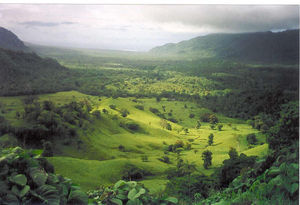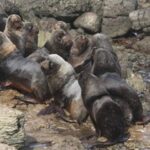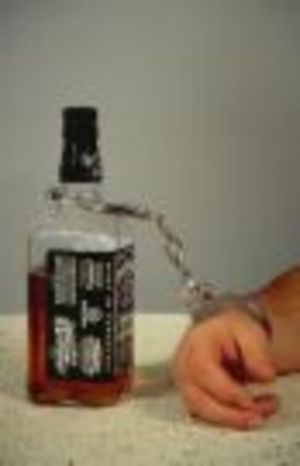The beans have been spilled as to where Survivor 19 will be located this fall: Samoa. Evidently, the producers at CBS didn’t have enough foresight to book their reservations at the Aggie Grey’s Hotel far enough in advance, and several tourists had their reservations cancelled for this summer to make room for them. Oops. While details about filming have not been revealed yet, a closer look into the Samoan islands can reveal some details about what might be seen in this fall’s season of Survivor.
Geography
Samoa is a group of islands in the South Pacific. It is located north of two previous Survivor locations, the Cook Islands and Fiji, and is located to the east of another Survivor location, Vanuatu. The Samoan Islands can be divided up into two halves. The western half is composed of the country of Samoa, and the eastern half is also known as American Samoa. The Aggie Grey’s Resort, booked by the Survivor Producers, is located on the Island of Upolu, in the country of Samoa.
Samoa has a total of nine islands, with the largest being Upolu and Savai’i. Samoa has seven smaller islands, including Apolima, Fanuatapu, Nu’ulopa, Nu’utele, Manono, Nu’ulua, and Nu’usafee. Apolima and Manono are small and inhabited, so it is likely that the Survivors will be located on one or two of the other small, but uninhabited, islands.
Climate and Natural Surroundings
Samoa is a tropical climate with warm temperatures and high humidity. Because it is located so closely to the equator, Samoa doesn’t see much temperature variation throughout the year. Survivor will be filming during the dry season, when Samoa usually experiences about 20 days at a time without rainfall. The average temperature during this season is a comfortable 78 degrees Farenheit, although humidity is at about 73%.
Samoa has a wide variety of birds, including doves, pigeons, parrots, wild ducks, and a colorful bird called the manuma. Animals that might be seen in Samoa include the flying fox, geckos, skinks, and the Pacific keel-scaled boa. Palm trees, white sandy beaches, waterfalls, and rainforests are also found in Samoa, making the land a beautiful paradise.
Culture
Samoa has a bloody history. The original Samoan natives were considered to be a warlike people. At one point, Germany, the United States, and Britain claimed the islands. A civil war ensued in the 1890s. A cease-fire was agreed upon in 1899. Germany ended up getting the western half of Samoa, America took the Eastern half, and Britain was given islands elsewhere. After World War I, New Zealand was given control over Samoa under a trusteeship. In 1962, Western Samoa gained their independence.
Samoans are a highly religious people. Many Samoans consider themselves to be Christians. They highly value relationships between people, and live a communal lifestyle with very little privacy. They have a traditional dance which is similar to the hula. Another traditional dance in Samoa is called the Sasa, and involves slapping oneself in time to music with a drum accompaniment. This dance originally was conceived while Samoans were slapping insects on their body.
Back to the Beach
Survivor Samoa brings the castaways back to the beach for their nineteenth season. The surroundings promise to be beautiful. While it remains to be seen whether CBS will capitalize Samoa’s warlike history and civil war, or whether they will emphasize the close-knit family structure and communal living of Samoa today, as long as they pick an interesting cast, it should be another good season.
Sources:
FAO Forestry Country Profiles, Samoa.” Food and Agriculture Organization of the United Nations, http://www.fao.org/forestry/18310/en/wsm/
“Samoa.” Wikipedia, http://en.wikipedia.org/wiki/Samoa
“Samoan Sensation.” http://www.samoa.co.uk/climate.html
“Samoan Tropical Moist Forests (OC0112),” World Wildlife Federation, http://www.worldwildlife.org/wildworld/profiles/terrestrial/oc/oc0112_full.html
“Wars of 1899,” The History Guy. http://www.historyguy.com/wars_of_1899.html
“Wildlife in Samoa.” Travel Maps of the World.com, http://travel.mapsofworld.com/samoa/samoa-tours/wildlife.html





